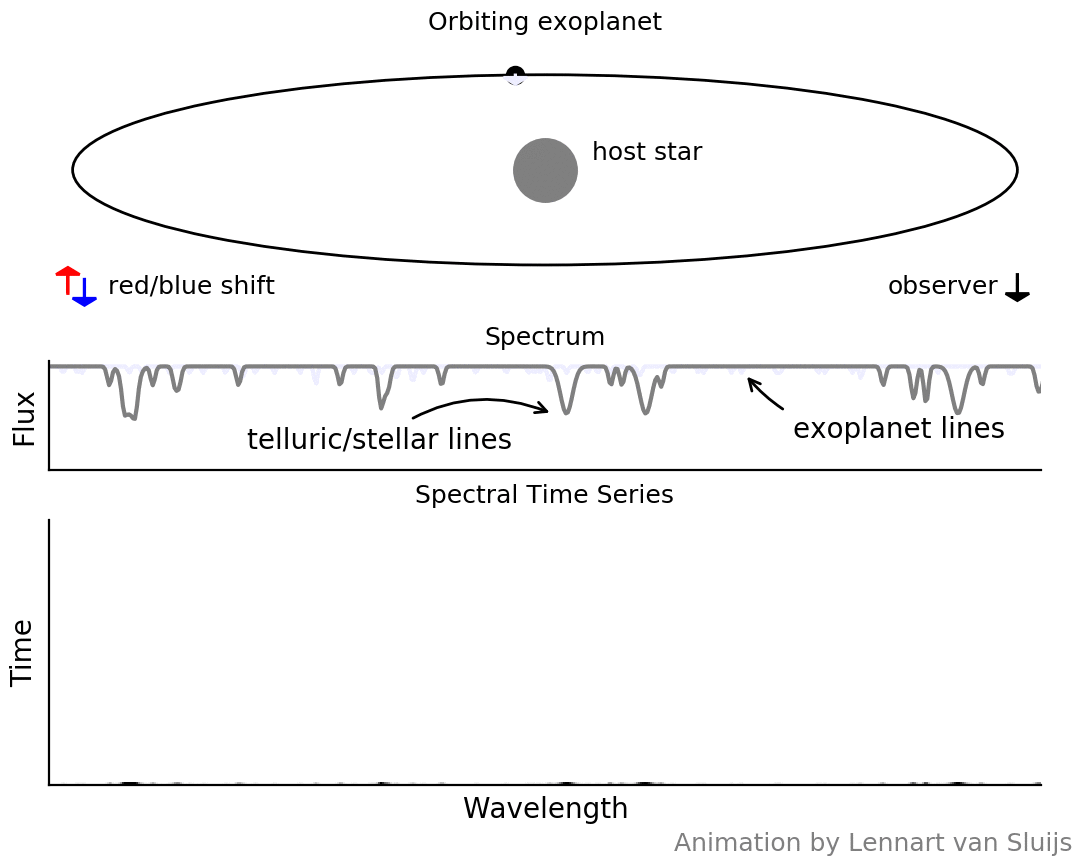The detection and characterization of many exoplanetary systems has revealed
a great diversity among them. This ‘zoo of exoplanets’ is thought to originate from their different
formation and evolutionary pathways. These processes are also thought to be imprinted in
their current atmospheric composition. Characterizing exoplanet atmospheres may therefore be key
in order to fully understand planet formation and evolution models.
Major observational challenges are the large star-planet contrast and small
angular separation. Often this is compared to trying to detect a firefly (the planet)
buzzing around in a lighthouse (the star). High resolution cross-correlation spectroscopy aims
to solve these problems by disentangling the telluric/stellar lines from the exoplanet
spectral lines at high spectral resolution using the exoplanet orbital phase dependent red/blue shift.
After stellar/telluric lines are removed, we can sum up the signal of all lines by cross-correlating
with a model template. This technique has successfully detected atomic/molecular species and winds
in exoplanet atmospheres.

Animation: Toy model explaining high resolution spectroscopy. As the planet orbits its host stars
its blueshift/redshift change. However, telluric/stellar lines are (quasi-)stationary in this rest frame
compared to the much larger planet orbital velocity. After obtaining a spectral time series, one tries
to remove the vertical stripes (telluric/stellar absorbtion lines) such that only the exoplanetary lines remain.
Animation publically available here.
In my current research I use this technique to analyze data observed as part of the Multiple Mirror Telescope Exoplanet Atmosphere Survey (MEASURE) program. This survey includes a diverse set of eleven hot-Jupiters and sub-Saturns. This relatively large set of exoplanets will be used to search for trends in the structure and composition of exoplanet atmospheres.
In the future, this might lead to new insights in how planets form and evolve. Furthermore, pioneering this technique for the largest exoplanets leads the way for the application on smaller, Earth-sized planets. Eventually, this technique might be used to search for biomarkers in Earth-sized exoplanets.
Interested in my work? I also presented a poster at the Exo3 conference in the summer of 2020 which can be found here.